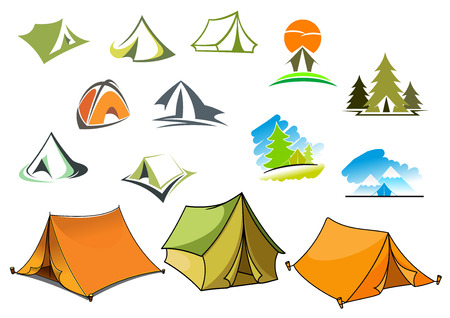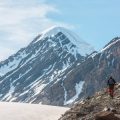1. Understanding Mountaineering in the Indian Context
When it comes to mountaineering, India stands as a unique playground for adventure enthusiasts. The country’s vast and varied geography offers climbers everything from the majestic Himalayan ranges in the north to the lush Western Ghats in the south. Each region brings its own set of challenges, shaping not just how climbing is approached, but also fostering a distinct community and culture around the sport. For many Indian mountaineers, the Himalayas are synonymous with high-altitude expeditions, technical ascents, and a spiritual connection that runs deep within local traditions. Meanwhile, the Western Ghats offer a different flavour—monsoon climbs, dense forests, and intricate rock faces that demand agility and quick decision-making. The interplay of these landscapes has cultivated a vibrant community that celebrates both tradition and modernity, blending age-old wisdom with contemporary techniques. Understanding this context is essential for anyone looking to explore or evaluate the difficulty levels of mountaineering across India.
2. Types of Mountaineering Adventures
India’s diverse landscape offers a wide spectrum of mountaineering adventures, catering to everyone from first-time trekkers to seasoned technical climbers. Understanding the different types of mountaineering found in India is crucial when deciding the right level of challenge for your next adventure.
Trekking Peaks
These are mountains that can generally be summited without advanced climbing techniques or specialised equipment. Trekking peaks are ideal for beginners and those looking to experience high-altitude environments with minimal technical difficulty. Popular examples include Stok Kangri in Ladakh and Kedarkantha in Uttarakhand.
Alpine Climbing
This involves climbing routes that may require basic to moderate technical skills, including the use of ropes, ice axes, and crampons. Alpine climbs often involve challenging weather and exposure but do not always demand professional-level expertise. Examples include Friendship Peak near Manali and Mentok Kangri in Ladakh.
Technical Mountaineering
The most demanding category, technical mountaineering requires advanced skills in rock, snow, and ice climbing. These expeditions often last several days and involve steep ascents, crevasse navigation, and sometimes mixed terrain. Examples are Mount Satopanth in Garhwal Himalaya and difficult Sahyadri rock faces like Duke’s Nose (Nagphani).
Comparison Table: Major Mountaineering Types in India
| Type | Skill Level Required | Popular Indian Locations | Main Features |
|---|---|---|---|
| Trekking Peaks | Beginner – Intermediate | Ladakh (Stok Kangri), Uttarakhand (Kedarkantha) | No major technical gear needed; basic fitness; breathtaking views; altitude experience |
| Alpine Climbing | Intermediate – Advanced | Ladakh (Mentok Kangri), Himachal Pradesh (Friendship Peak) | Use of ropes & crampons; moderate exposure; glacier travel possible |
| Technical Mountaineering | Advanced – Expert | Garhwal Himalaya (Satopanth), Maharashtra (Duke’s Nose) | Requires advanced skills; multi-day expeditions; mixed terrain (rock/ice/snow) |
Cultural Note:
In India, many local communities such as the Sherpas in Sikkim and Ladakhi guides have rich traditions in the mountains. Engaging with local expertise not only enhances safety but also deepens cultural immersion during your climb.
![]()
3. Decoding Difficulty: Indian Grading and Factors
When planning a mountaineering adventure in India, it’s crucial to understand the unique grading systems and local factors that define difficulty here. The Indian Mountaineering Foundation (IMF) is the apex body for mountaineering in India and has developed its own set of ratings to help climbers assess what they are signing up for. These IMF grades generally classify routes as Easy, Moderate, Difficult, or Very Difficult. However, seasoned Indian trekkers also use terms like “trek,” “expedition,” or “technical climb” based on the gear required, expected weather conditions, and risk factors.
IMF Grading System Explained
The IMF system takes into account several variables: altitude, terrain complexity, length of the route, technical climbing involved, and remoteness. For example, an ‘Easy’ grade might refer to treks like Triund or Nag Tibba where paths are well-marked and support is available. In contrast, a ‘Very Difficult’ grade—think Stok Kangri or Kedar Dome—demands glacier travel skills, use of ice axes and crampons, and acclimatisation to high altitudes above 6,000 metres.
Local Factors Influencing Difficulty
India’s diverse geography means grading cannot be universal. The Himalayan monsoon season (June–September) can turn simple trails into treacherous mudslides or cause sudden landslides in Uttarakhand and Himachal Pradesh. Altitude is another big influencer: climbs above 3,500 metres pose risks of Acute Mountain Sickness (AMS), especially in Ladakh or Sikkim. Additionally, temperatures can swing wildly—even within one day—so the same trek may feel dramatically different depending on the month you attempt it.
Cultural Nuances in Difficulty Ratings
Unlike European or North American systems, Indian mountaineering often mixes local wisdom with formal ratings. Guides from villages like Manali or Darjeeling may describe a climb as “doable for strong pahadi people” (locals accustomed to mountains), but it could still be a tough slog for city-dwellers. Always consult both the IMF grade and local advice before making your decision.
Understanding these grading systems—and respecting the local environment—will help you choose adventures that match your experience level while keeping you safe amid India’s mighty mountains.
4. Cultural and Safety Aspects on Indian Peaks
India’s mountains are not just challenging landscapes; they are also deeply embedded with cultural, spiritual, and local significance. Before planning your mountaineering trip, it is essential to understand and respect the unique customs, safety protocols, and sacred values associated with Indian peaks.
Respecting Regional Customs and Sacred Mountains
Many Indian peaks, especially in states like Uttarakhand, Sikkim, and Himachal Pradesh, are considered sacred by local communities. For instance, Nanda Devi and Kangchenjunga are revered as goddesses. It is common for climbers to stop short of the actual summit out of respect for these beliefs. Always consult with local authorities or guides about such customs before planning your ascent.
| Region | Sacred Peaks | Cultural Practices |
|---|---|---|
| Uttarakhand | Nanda Devi | Summit approach restrictions, rituals before climb |
| Sikkim | Kangchenjunga | No climbing to the true summit allowed, offerings at base camps |
| Ladakh | Stok Kangri | Buddhist blessings before expedition, seasonal closures for environmental reasons |
The Role of Local Guides in India
Hiring local guides is highly recommended when mountaineering in India. Local guides have deep knowledge of the terrain, weather patterns, and cultural sensitivities. They can assist with navigation, communication with villagers, emergency response, and ensure you do not unintentionally violate local traditions.
Benefits of Local Guides:
- Better understanding of unpredictable weather conditions (monsoon impacts, snowfall timing)
- Insight into wildlife encounters (bears, leopards in the Himalayas)
- Cultural mediation during village stays or temple visits en route to base camps
- Emergency support—many remote areas have limited rescue infrastructure, so guides’ experience is invaluable
Practical Safety Tips for Indian Terrain
Mountaineering in India presents specific challenges due to its diverse geography—from the glaciers of Ladakh to the rain-drenched slopes of Meghalaya. Here are practical safety tips tailored for India:
- Acclimatise properly: High-altitude sickness is common above 3000m; always plan gradual ascents.
- Monsoon awareness: Avoid climbs during heavy rains (June–September), especially in Eastern Himalayas due to landslides and flooding.
- Wildlife caution: Carry bear bells or pepper spray in certain regions; store food securely.
- Pandemic/health precautions: Remote villages may have limited medical access—carry a comprehensive first aid kit and necessary medicines.
- Permits and paperwork: Many peaks require Inner Line Permits (ILP) or special permissions from state authorities—always verify requirements in advance.
Summary Table: Key Cultural & Safety Considerations per Region
| Region | Cultural Respect Points | Main Safety Concern |
|---|---|---|
| Ladakh/Zanskar | Buddhist customs at monasteries en route; restricted climbing seasons | Altitude sickness; cold exposure |
| Sikkim/North-East Hills | Avoid summiting sacred peaks; eco-sensitive zones | Landslides during monsoon; leech bites |
| Kumaon/Garhwal | Sacred festivals; permission from forest departments | Avalanches; glacier crevasses |
In summary, understanding both the cultural landscape and unique safety requirements is vital when choosing your mountaineering challenge in India. Whether you aim for a technical ascent or a pilgrimage trek, respecting local ethos and staying prepared ensures a rewarding—and safe—mountain experience.
5. Choosing the Right Expedition for You
Deciding which mountaineering expedition to join in India involves balancing your physical fitness, experience, budget, and understanding of local regulations. Here’s how you can align your choices with Indian terrain and culture:
Match Your Experience and Fitness Level
India offers a vast range of climbing opportunities – from easy treks like Triund or Kedarkantha to advanced technical climbs in the Garhwal or Zanskar Himalayas. If you’re new to mountaineering, start with low-altitude treks in Himachal Pradesh or Uttarakhand. For seasoned climbers, expeditions like Stok Kangri or Nun Kun are more suitable. Remember, local guides often use terms like “moderate” or “difficult” based on regional standards, so always clarify details with your operator.
Budgeting in Indian Rupees (INR)
Plan your finances keeping Indian costs in mind. A basic trek may cost ₹10,000–₹20,000 per person for a week, including food and shared accommodation, while technical expeditions can go above ₹1 lakh (₹100,000). Factor in gear rental (often available in places like Manali or Leh), travel from major cities, porter fees, and unforeseen expenses such as medical emergencies. Many operators accept digital payments via UPI or PayTM—very common in India.
Permits and Permissions
Many mountain routes require permits issued by the Indian Mountaineering Foundation (IMF) or state forest departments. Foreign nationals may need additional clearance from the Ministry of Home Affairs for certain border areas (like Sikkim or Ladakh). Some routes involve eco-fees or village council permissions (“gram panchayat”), especially in Himachal and Uttarakhand. Always check requirements well in advance—processes can take weeks and usually need passport-sized photos, ID proof, and sometimes a letter of intent.
Local Tips
If you’re unsure where to begin, connect with Indian trekking communities on WhatsApp or Facebook; they share real-time advice and route updates. Don’t hesitate to consult local guides—they know not just the trails but also cultural nuances such as temple customs or seasonal fairs that may affect your journey.
Final Word
Selecting an expedition is about more than just altitude—it’s about respecting local conditions, managing resources wisely, and embracing India’s unique mountain culture. Plan thoughtfully and you’ll have a safe and unforgettable adventure!
6. Essential Gear for Indian Conditions
Choosing the right gear is crucial for safe and successful mountaineering in India, where diverse climates and terrains—from the humid monsoon jungles of the Western Ghats to the snow-covered peaks of the Himalayas—demand thoughtful preparation. In this section, we’ll break down how to select essential equipment with a focus on Indian retailers and local brands, as well as how to equip yourself for monsoon, snow, and high-altitude conditions.
Guide to Gear Selection in India
When shopping for mountaineering gear in India, you’ll find both international outlets (like Decathlon or Wildcraft) and homegrown brands (such as Quechua India, Forclaz by Decathlon India, and Adventure Worx). Local outdoor shops in cities like Delhi, Bengaluru, and Manali also stock region-specific essentials tailored to typical Indian expeditions.
Monsoon-Ready Equipment
During the monsoon months (June–September), waterproofing is your best friend. Opt for quick-dry clothing made from synthetic fibers, reliable rain jackets with sealed seams, and rain covers for backpacks. Gumboots or water-resistant trekking shoes from Indian brands like Wildcraft can handle slushy trails. Don’t forget anti-leech socks when trekking in regions like the Western Ghats!
Snow & High-Altitude Essentials
For snowy Himalayan climbs or high passes above 3,000 meters, thermal base layers are a must—look for merino wool or advanced synthetics available at leading Indian stores. Insulated jackets (down or synthetic fill), waterproof gloves, balaclavas, and UV-protection sunglasses shield against wind chill and sun glare. Crampons and ice axes can be rented locally in hubs like Leh or Manali if you’re not ready to invest.
Local Wisdom: Indian Brands & Community Tips
Indian mountaineers often recommend layering clothing to adapt to rapidly changing weather. Wildcraft rucksacks are a popular choice for their durability on rough Indian trails. For cooking at altitude, compact stoves compatible with locally available LPG canisters save hassle. And always check with local guides about specific requirements for your chosen route—sometimes simple items like extra tarps or jute ropes prove invaluable in the Indian context.
Final Thoughts
Your gear should match both the mountain’s demands and India’s unique environmental challenges. Shop smartly using trusted Indian retailers, consult experienced trekkers on online forums like Indiamike or Instagram communities such as #IndianMountaineers, and remember: good preparation is your ticket to enjoying every adventure—rain or shine, peak or plateau.


